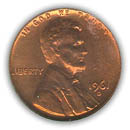Coins cost more to make than face value

WASHINGTON — The next time someone offers you a penny for your thoughts, you might want to take them up on it.
For the first time in U.S. history, the cost of manufacturing both a penny and a nickel is more than the 1-cent and 5-cent values of the coins themselves. Skyrocketing metals prices are behind the increase, the U.S. Mint said in a letter to members of Congress last week.
The Mint estimates it will cost 1.23 cents per penny and 5.73 cents per nickel this fiscal year, which ends Sept. 30. The cost of producing a penny has risen 27% in the last year, while nickel manufacturing costs have risen 19%.
BACKGROUND: A brief history of the penny
The estimates take into account rising metals prices as well as processing, labor and transportation costs. Based on current metals prices, the value of the metal in a nickel alone is a little more than 5 cents. The metal in a penny, however, is still worth less than a penny.
“Higher zinc, copper and nickel prices are raising the production costs of the nation’s coinage,” the Mint said in the letter, which it provided to USA TODAY Tuesday.
Metals prices have been soaring this year as a strong economy worldwide has led to an increase in demand. The prices of metals used in coins are all rising: Zinc is up 76% this year, copper is up 68%, and nickel is up 42%, according to the London Metal Exchange.
But consumers should not hoard coins or melt down the change in their kids’ piggy banks, says Michael Helmar, an economist and metals analyst at Moody’s Economy.com. He says the process of melting the coins, separating out the metals, then selling would be costly and time-consuming.
“If they were made out of gold, sure,” he says. But “there are just too many other costs.”
Read the full article.